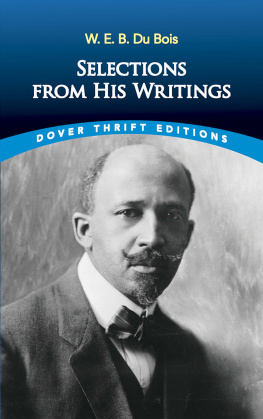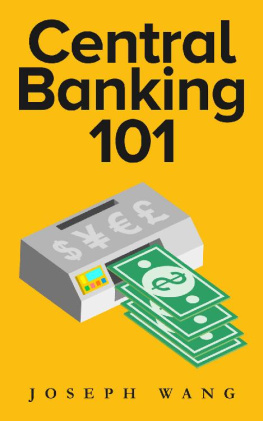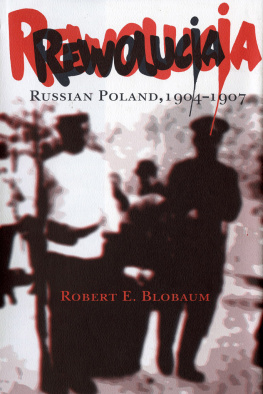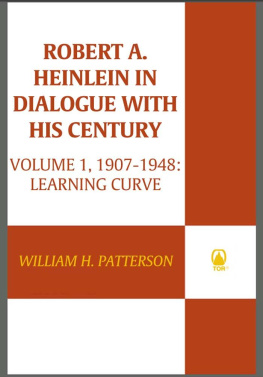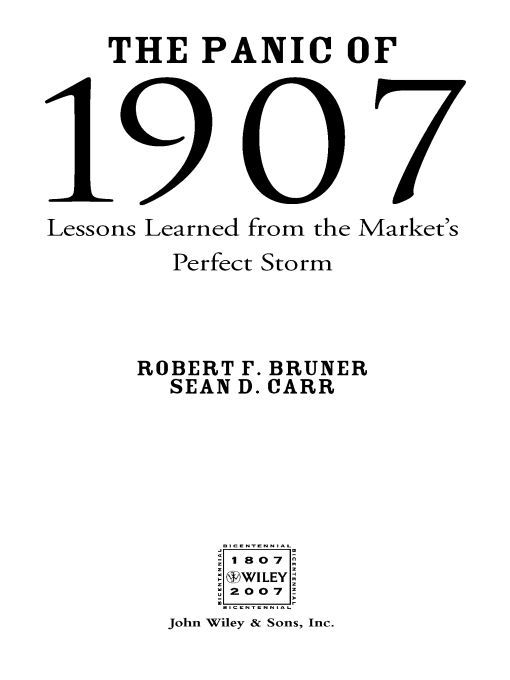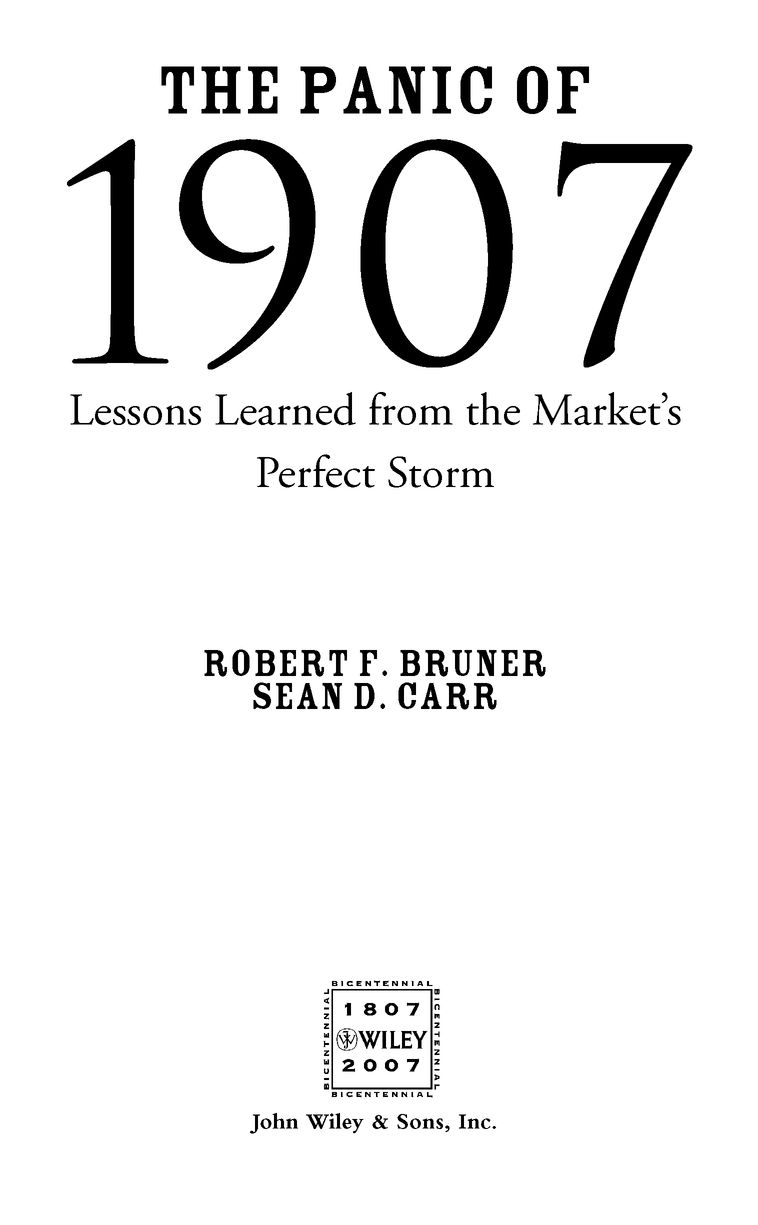Table of Contents
RFB:
For Bobbie
Treasure is in knowing that you are loved and that you love because
you are loved, and that knowledge of self and relationship and
purpose is what treasure is all about.
Peter J. Gomes
SDC:
For Ladi
The salvation of this human world lies nowhere else than in the
human heart, in the human power to reflect, in human meekness and
human responsibility.
Vaclav Havel
Acknowledgments
We gratefully acknowledge the thoughtful guidance and generous encouragement offered by Brian Balough (University of Virginia), Charles Calomiris (Columbia University), Dwight Crane (Harvard Business School), Robert Friedel (University of Maryland) and Richard Sylla (New York University). William Harbaugh (University of Virginia), Robert Parrino (University of Texas), Jean Strouse (New York City Public Library), and Richard Tedlow (Harvard Business School) also provided useful insights at various stages of the books development. Our colleagues at the University of Virginias Darden Business School, including Peter Debaere, Marc Lipson, Frank Warnock, and the participants in the finance and economics seminar provided especially helpful comments on an earlier draft. Christina A. Ziegler-McPherson gave valuable research assistance underlying the books early chapters, and we have drawn on her considerable knowledge of the Gilded Age and Progressive Era. Karen Marsh King, at the Darden School Library, rendered excellent bibliographical assistance, and Susan Norrisey, our reference librarian, exhibited an extraordinary degree of diligence, persistence, and patience in collecting archival trading data; she was tireless in her work, and for this we are especially appreciative. Our editors at Wiley brought understanding and perspective to the work, and we are grateful for the insights provided by Pamela von Giessen, Bill Falloon, Emilie Herman, Laura Walsh, and Todd Tedesco. As always, Lewis OBrien was unflagging is his attention to the correctness of our source materials. Any errors that may remain are ours alone.
RFB and SDC
Charlottesville, Virginia
June 2007
Prologue
These are troublous times.
Charles T. Barney
Knickerbocker Trust Company
October 21, 1907
Around 10 A.M. on November 14, 1907, Lily Barney and a friend were chatting in the Barneys second-story bedroom overlooking Park Avenue when they heard the crack of a gunshot echo through the house. The women bolted toward the other bedroom across the hall. Stepping inside, they saw Lilys husband, Charles, lying on the floor near his bed in his pajamas. Beside him was a revolver containing three loaded cartridges and one empty shell. The Barneys had kept pistols on every floor of the house for protection, and this one clearly belonged to Charles.
As Lily Barney came near, her husband raised himself slightly but slumped in pain to the floor. She knelt beside him, cradled his head in her lap, and attempted to ease his discomfort. Ashbel Barney, one of the Barneys two sons, had been downstairs and had also heard the shot. Running to the bedroom and seeing his mother and her friend bending over his wounded father, he raced to telephone George Dixon, the Barneys family physician. Then, with the help of his mother and servants the 20-year-old Ashbel lifted his father to his large, brass, canopy-covered bed. Charles T. Barney remained conscious, but silent.
Dixon reached the Barney house in Manhattans fashionable Murray Hill neighborhood 10 minutes after receiving the call. After administering an anesthetic he began an operation in which he discovered that a .38-caliber bullet had entered the upper left quadrant of Barneys abdomen; it had taken an upward course, torn through the intestines, traveled lengthwise through the left lung, and embedded in the left shoulder just behind the collarbone. Despite their ministrations, around 2:30 in the afternoon Charles Barney was pronounced dead from shock and severe hemorrhaging. Within hours newsboys were bellowing extras about the incident all along Park Avenue.
Over the coming days, rumors and innuendoes about Barneys death reverberated throughout the city. Stories appeared about previous suicide attempts (though none could be confirmed)
Whatever his personal faults, though, the death of Charles T. Barney aroused extreme public interest and suspicion for one reason only: Barney had presided over New Yorks famed Knickerbocker Trust Company when its dramatic failure in October 1907 became the tipping point for a financial crisis of monumental proportions.
Charles Tracy Barney was truly a man of the Gilded Age. The son of a prosperous Cleveland merchant, he had married into the prominent Whitney family when he wed Lily Whitney, the sister of the financier and former U.S. Secretary of the Navy, William C. Whitney. Barney pursued a career in banking, and his Whitney connections ensured him lucrative business opportunities in New York real estate development and speculation. By 1907 Barney had become a director of at least 33 corporations, and he was among the founding investors of New York Citys new subway system.
Barneys ascent to New Yorks financial firmament coincided with his association with the Knickerbocker Trust Company. By the 1890s, he had become its vice president, and in 1897 he was elected to the firms top office. The handsome but high-strung Barney emerged as one of the leading figures in New Yorks financial community, and he had developed a reputation as one of the most imperious of Wall Streets bankers, who ruled every undertaking that he had anything to do with.
Such a man, at the height of his wealth and power, could scarcely have foreseen how swiftly and ignominiously his downfall would come. In early October 1907, two unscrupulous (and colorful) speculators, F. Augustus Heinze and Charles W. Morse, had contrived an elaborate scheme to corner the market in the stock of a copper mining company. The attempt failed miserably. Such a scheme would hardly have bothered the members of New Yorks financial elite, such as Charles Barney, but Heinze and Morse had convinced several New York trust companies, including the Knickerbocker, to fund their venture.
As word spread that the Knickerbockerand perhaps even Charles Barney himselfwas embroiled in the Heinze-Morse scheme, the 18,000 depositors of the trust company panicked. Simply an association with the speculators was more than most depositors could bear. On Friday, October 17, a run on the Knickerbocker was under way, and dozens of depositors clamored at the trust companys doors to claim their funds.
Given the close financial relationships among all the banks and trust companies in New York City, panic gripped investors and depositors alike. In an attempt to quell this spiraling hysteria, on October 21 the directors of the Knickerbocker Trust convinced Charles Barney to tender his resignation. In a statement issued later that night, Barney said humbly, I resigned to give my associates in the company a free hand in the management. But when he was asked about the financial condition of the Knickerbocker, Barney laughed at any suggestion that the institution might be in trouble. Nothing could be more absurd, he said. The company was never in a stronger position. It remains the next to the largest in the city and as sound as any. There is not the slightest question of its entire solvency.


